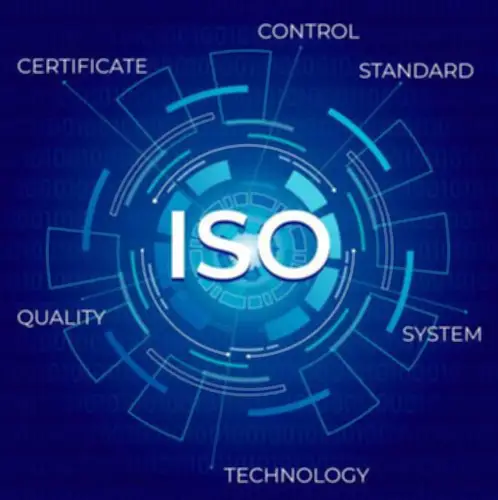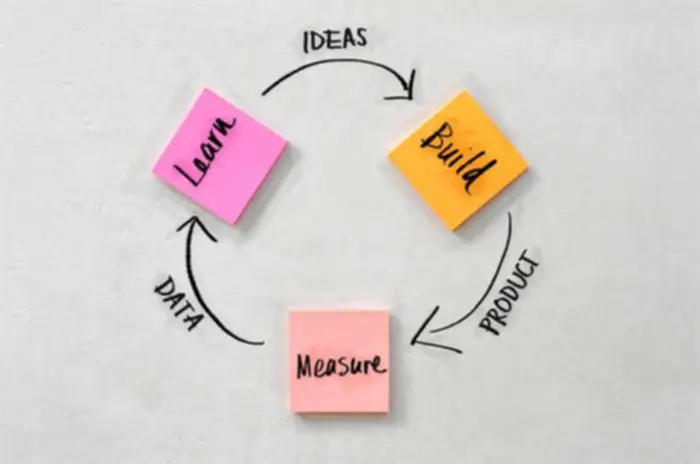Ehr Vs Emr: Understanding The Necessary Thing Differences In Fashionable Healthcare
This structured comparability highlights how EHRs lengthen beyond the capabilities of EMRs, making them more suitable for built-in and collaborative care environments. In 2020, the Facilities for Medicare and Medicaid Companies (CMS) strengthened interoperability by way of its Interoperability and Affected Person Entry Ultimate Rule, derived from the twenty first Century Cures Act. Choosing between Electronic Medical Information (EMRs) and Digital Health Information (EHRs) requires evaluating features, prices, and long-term value. The price tag alone shouldn’t be the figuring out think about whether or not an EMR vs. EHR is the best choice on your follow. EHRs have nice features, and so they usually value extra to arrange, put by way of coaching, and preserve. EMRs, whereas their performance is restricted, can symbolize a great budget-minded selection, notably for solo practitioners or small groups concerned with behavioral health.
Moreover, each EHRs and EMRs contribute to improved patient care by facilitating accurate and timely entry to medical information, enhancing communication among healthcare suppliers, and supporting clinical decision-making processes. It is essential to note that whereas EMRs and EHRs have distinct differences, they both play crucial roles in modern healthcare techniques. This can streamline workflows inside a single group and enhance the overall quality of care supplied to sufferers. EMRs are digital medical records used within a single healthcare supplier, whereas EHRs enable seamless data sharing across a quantity of suppliers.
By leveraging knowledge analytics, healthcare organizations could make more informed selections, personalize remedy plans, and proactively address public health considerations. Moreover, EHRs play a vital function in advancing medical research and inhabitants health administration. This data-driven method additionally supports the shift in the course of value-based care fashions, the place healthcare suppliers are incentivized to ship high-quality care that’s cost-effective and patient-centered. Each EMR and EHR are used in totally different situations in accordance with particular requirements.
This consists of medications, allergies, diagnoses, and treatment history, improving care coordination. EHR stands for electronic well being report, and it is a digital model of the patient chart that offers insights into their medical situation and historical past. EHRs are designed to be shared with different healthcare service suppliers to investigate a patient’s medical historical past and current well being condition for purposes like therapy and medical claims. The mandated switch to digital data garnered loads of news coverage, with tales about digital health data (EHR) and electronic medical data (EMR) peppering both medical and mainstream publications. EHRs assist to enhance the standard of care that patients receive by allowing providers to have access to a patient’s full medical history.
Emrs Vs Ehrs: Understanding The Distinction
- They span multiple healthcare providers and organizations, making them important for big hospital networks, authorities health packages, and multi-specialty healthcare methods.
- In the realm of healthcare know-how, both EMRs and EHRs serve important roles in making healthcare extra environment friendly and cost-effective.
- In fact, the patient’s medical report would possibly even need to be printed out and mailed for another supplier to see it.
- These are some of the numerous advantages of EMRs and EHRs for all medical practices.
- These licensed EHR methods meet specific technical standards for interoperability, safety, and information trade, ensuring that patient records may be shared seamlessly across systems and establishments while protecting affected person privateness.
Understanding the difference between Electronic Medical Records (EMR) and Electronic Health Records (EHR) is essential for healthcare providers, IT professionals, and sufferers. When a supplier has all the pieces—each representing data from different docs and labs—they could make higher healthcare selections, sooner. While there are some variations between EMRs and EHRs, they each play an essential position within the healthcare industry. They help both the patient and provider attain remedy choices and diagnoses faster. This article explores the definitions of EMRs and EHRs, their variations, and their roles in fashionable healthcare delivery. For example, medical decision help tools in EHR alert providers if a new prescription may work together negatively with present medications.
The federal government and health organizations invested billions of dollars to fund the hardware, software and coaching needed to complete the changeover. EMRs are owned and controlled by the healthcare provider or facility that creates them. Sufferers can not access their EMRs directly and must request copies to transfer their records to a different doctor. Since the data is saved inside a single system, ownership remains strictly with the provider, not the patient overfitting in ml. With an EHR, licensed suppliers can access a patient’s full medical historical past, together with lab outcomes, prescriptions, imaging scans, and doctor notes.
In many instances, when somebody refers to an “EHR” they are really talking about licensed EHR technology. This certification is especially necessary for suppliers who participate within the Medicare Promoting Interoperability program, or who need to change information with different EHR methods. Digital medical data (EMR) are digital versions of the paper affected person charts that have long been essential to medical practices. If a patient visits a special physician, the new supplier won’t have access to the patient’s medical historical past until the data are printed or manually transferred. This limitation can result in fragmented care, duplicated exams, and potential medical errors.
EMRs concentrate on inside record-keeping, whereas EHRs enhance interoperability, affected person care coordination, and accessibility, making them the popular choice for built-in healthcare techniques. Let’s start an EHR vs EMR comparability by dissecting Electronic Health Records (EHR). EHRs are comprehensive digital variations of a patient’s medical history, containing info gathered from a number of sources, including healthcare suppliers, laboratories, specialists, and even the patient themselves. In Distinction To EMRs, EHRs are designed to be accessible past individual healthcare organizations, enabling seamless sharing of patient data between totally different suppliers and healthcare settings. One of the key advantages of EHRs is their ability to enhance patient care by providing a centralized platform for healthcare providers to access and update a patient’s medical data in real-time.

For healthcare suppliers who originally adopted an EMR to satisfy the 2014 requirement, it’s necessary to understand the advantages of switching to an EHR now. Two of these options are digital medical information (EMR) and digital health data (EHR). Though the terms are often used interchangeably and share many similarities, the 2 are actually different sorts of software instruments.
This accessibility to up-to-date data might help scale back medical errors, enhance prognosis accuracy, and enhance total patient outcomes. Moreover, EHRs typically embrace options such as choice support instruments, electronic prescribing, and secure messaging systems, additional streamlining the delivery of healthcare providers. Integrated digital health report methods enhance care coordination by connecting all suppliers with the same accurate information regarding a patient’s well being. With the variety of specialists out there at present, many sufferers see multiple medical doctors and practitioners relying on their needs. Alternatively, patients have extra sources at their fingertips to see a number of suppliers for second opinions or to find someone extra favorable to their insurance plan. Healthcare providers’ simpler access to their patient’s well being data reduces medical errors.
CEHRTs are crucial for healthcare suppliers to engage in high quality packages and value-based care, which depend on accurate, up-to-date well being data to improve patient outcomes. By guaranteeing that knowledge is shared across completely different providers and settings, CEHRTs facilitate higher care coordination and assist enhance each the effectivity and effectiveness of healthcare supply. You might have heard people discuss with athenaOne or athenaClinicals as an EMR out of habit. That’s as a outcome of EMR was the unique time period ehr software development cost when paper well being data were first digitized.
Emrs And Ehrs Provide Clear Timelines Of Patient Medical History
Patients should depend on printed records or separate techniques for any access, which reduces their capacity to stay informed and engaged. EHR empowers sufferers through portals, enabling entry to test results, appointment scheduling, and medical histories. Engagement features, like reminders and academic resources, assist patients participate actively in their health management. AthenaOne includes a scientific documentation and encounter workflow engine that streamlines everything from pre-visit prep to post-visit billing. Your clinicians and staff can begin by completing tasks earlier than the affected person ever arrives, like reviewing charts.
Selecting a completely built-in EHR goes past simply the options — you’ll need to gauge the costs, required hardware, the complexity of implementation, and the out there training and support. Choose a system based on your workflow, budget, and long-term imaginative and prescient, the broader abilities of an EHR, or the trimmed-down simplicity of an EMR. EHRs are considered world methods, as a outcome of they’re designed to allow safe communication between various health info systems. Meet NextGen Ambient Help, your new AI ally that generates a structured SOAP note in seconds from listening to the pure patient/provider dialog.

An Electronic Medical Report (EMR) is a digital model of a paper chart used inside a single healthcare provider or organization https://www.globalcloudteam.com/. It contains patient history, prescriptions, diagnoses, lab outcomes, and remedy plans. EHR presents a complete view of a patient’s well being, integrating data across a quantity of providers.
Nonetheless, a single letter in each acronym makes a world of difference of their functionality and impact. Although many medical software suppliers require you to pay individually for EMR and PMS software program, some providers embrace full EMR and PMS entry to all paying clients. However, as healthcare shifts toward interoperability and digital transformation, EHRs have gotten the standard for contemporary practices. Although EMRs lack interoperability, they proceed to be invaluable for their simplicity and skill to cater to smaller operations. Examples include standalone methods like Kareo Clinical or eMDs, which help small-scale practices without overburdening them with unnecessary features.
